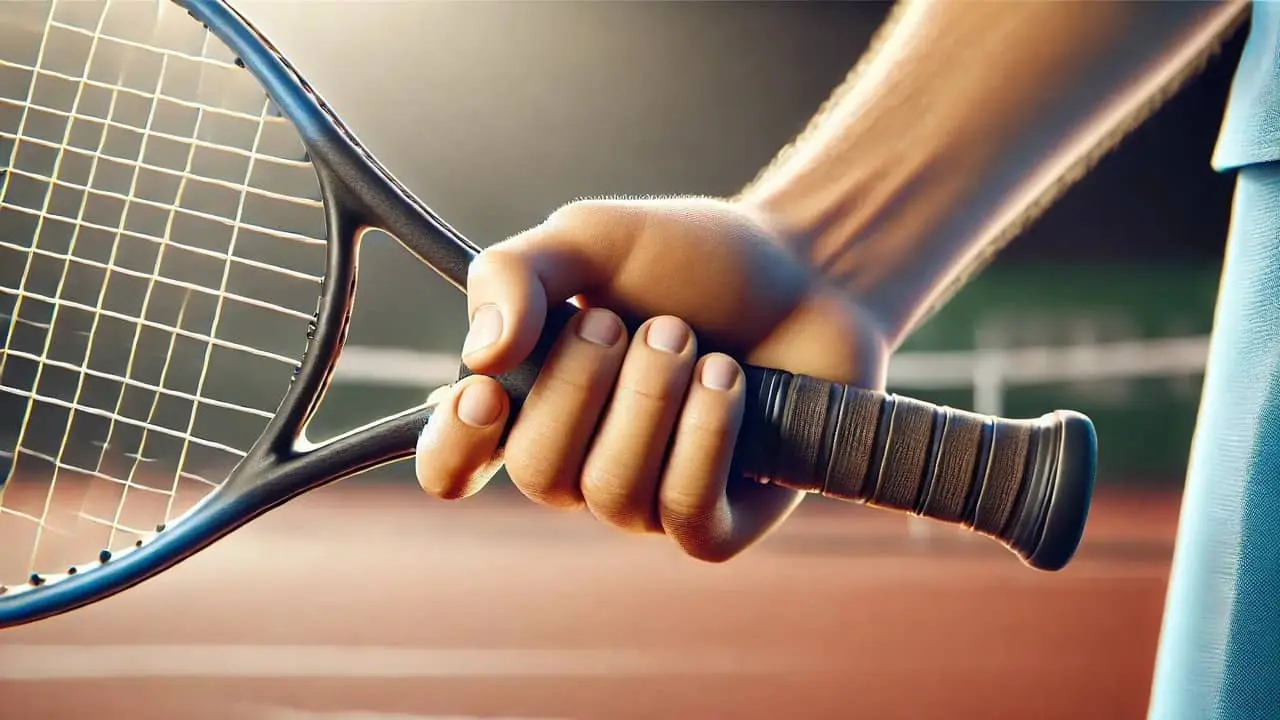The continental tennis grip is also referred to as the “chopper grip.” It is known because the racket holds like the motion of chopping wood with an axe.It is also referred to as the “hammer grip” since it resembles holding a hammer. It works well for a variety of defensive strokes, serves, volleys, and slices. It is much better than the Eastern forehand and Western Forehand grip.
Are you looking for a versatile tennis grip? Yes, the continental grip is versatile and used for all types of tennis shots and tennis players. This blog post will discuss the benefits and uses of backhand and forehand continental grip.
Table of Contents
ToggleBenefits of the Continental Tennis Grip
This is a neutral grip. It allows players to handle a variety of shots without adjusting their hand position. Players can defend against fast-paced shots without losing control with that grip.
1. Versatility in Shot-Making
- Serves. This tennis grip allows more natural motion and provides spin and precision. It is special for slice serves, which disrupt an opponent’s rhythm.
- Volleys. This grip is ideal for volleys because it responds quickly near the net. Volleys require flattening the ball and fast adjustments. The structure of this grip supports such adjustments and efficient racket handling.
- Overheads and Smashes. Players often use the Continental grip for overhead shots. It helps players to generate upward power while maintaining control and accuracy.
2. Ease of Transition Between Shots
During a match tennis players need constant change from baseline rallies to net play. The Continental grip provides easy transitions between different strokes. When players switch from a groundstroke to a volley, they can maintain the same grip. Thus, the players are prevented from mishits and losing control.
3. Reduction in Injury Risk
The use of a Continental forehand grip reduces the risk of injury in the wrist and forearm. Because this grip promotes a more natural wrist position during strokes. It can reduce excessive strain associated with improperly aligned grips.
How to Hold the Continental Tennis Grip?
It is often characterized by a neutral hand position, whose back is parallel to the ground.
- Position the Racket. Using your non-dominant hand, hold the racket perpendicular to the floor.
- Find the Second Bevel. Locate the second bevel of the racket handle, counting from the top.
- Place Your Hand. Place your hand on the second bevel.
- Wrap Your Fingers. Make sure your fingers are firmly but loosely wrapped around the handle.
- Thumb Position. Put your thumb around the back of the handle for control and stability.
How Continental Tennis Grip Impacts Your Game?
This grip enhances your game in many ways:
- This is a game-changer grip in doubles tennis matches where net play is crucial.
- It Improves serve consistency.
- It makes it easier to execute these shots.
Continental Tennis grip Forehand
For forehand strokes like slices and drop shots players use a forehand continental grip. It produces flat or underspin shots. This grip is not suitable for topspin and power groundstrokes. The palm faces slightly upwards, making the racket angle more open.
Continental Tennis grip Backhand
Players use one-handed and two-handed backhands continental grip for backhand volleys and overheads. The palm faces slightly downwards, giving a more neutral racket angle to have it. It provides a combination of power and precision for one-handed backhands and volleys.
Conclusion
Powerful serves, volleys, and effective slices are the advantages of Continental Grip. Gaining this grip can help players play better and make their shots more varied. The grip is suitable for a range of playing styles due to its adaptability. It enhances your performance on the court, regardless of your level of skill.
FAQs
These are some frequently asked questions concerning the Continental Tennis Grip. They include its drawbacks and ideal playing styles.
To learn the Continental Grip:
- Identify the bevels on your racket handle.
- Press your index finger onto the second bevel.
- Ensure your palm is facing slightly upwards.
- Practice regularly to develop muscle memory.
The Continental Grip differs from other grips in its neutral hand position.Compared to the Eastern or semi-western forehand grips, it is less severe.
Common mistakes include:
- Gripping too tightly
- Incorrect hand position
- Poor follow-through

